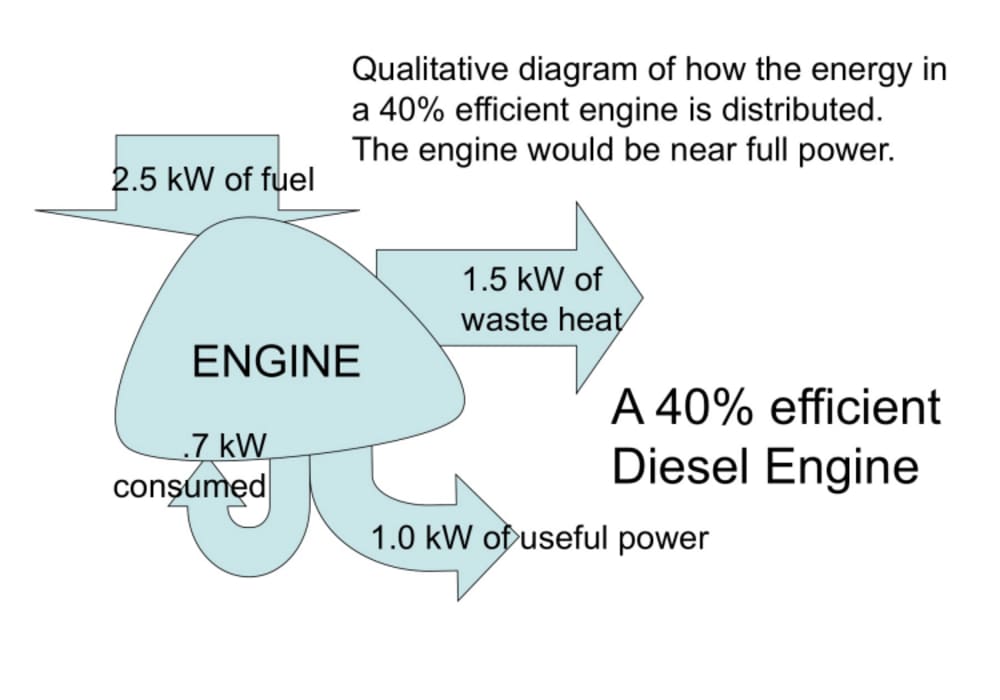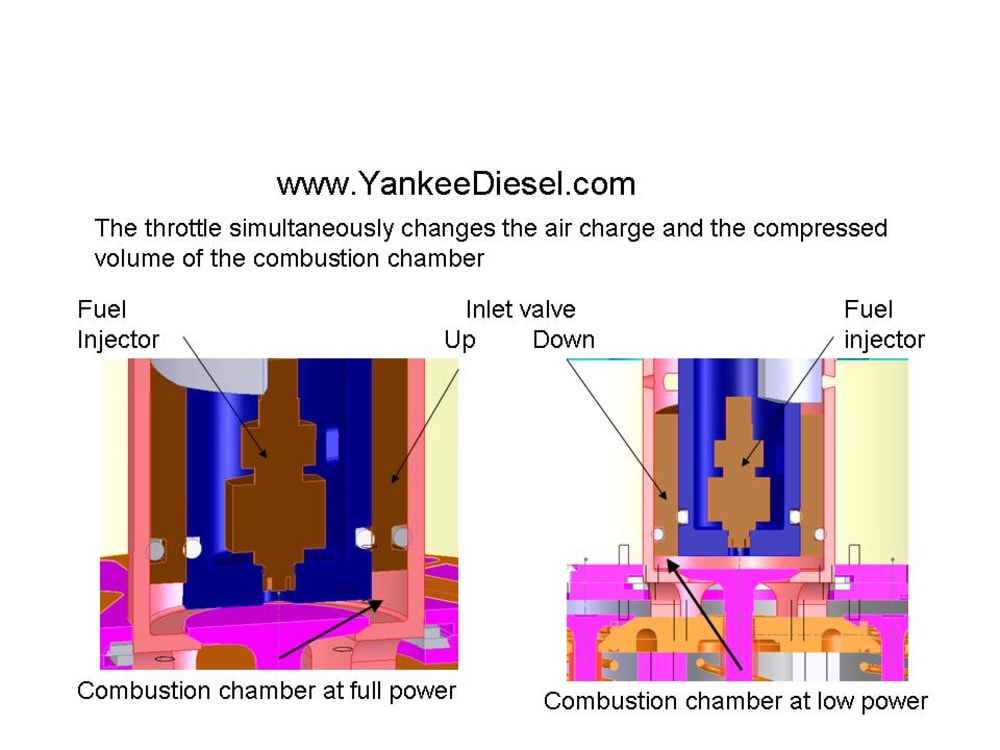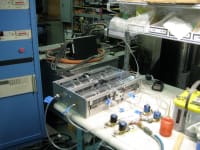Yes I know this is NASA but this is really simple. Efficiency is better! Diesel engines have been around for 100 years. They have improved but are reaching a point of diminishing return. Their fundamental process is the same – combustion in a cylinder that pushes a piston. At the end of its stroke, the hot gases still have a lot of energy and that goes out the exhaust pipe. The YankeeDiesel allows that energy to expand more and produce more power. It is a radical design that would not come from the people who have been using a reciprocating piston for 100 years.
The YankeeDiesel project started in 2007 with two goals: 1) increasing the peak efficiency and 2) extending that peak efficiency over a wide range. Higher peak efficiency is done by extending the power stroke with a secondary expansion chamber. The wider efficiency range is done with a throttle. Because diesels are compression ignition engines, they can not have throttles. But the YankeeDiesel is not the old style reciprocating piston engine.
The first figure shows how the energy in a very good diesel engine is distributed. The biggest loss is waste heat. Turbochargers capture some of that energy to force air into the engine. They increase efficiency but still a lot is wasted. The YankeeDiesel has a secondary expansion chamber that triples the combustion chamber’s expansion. The exhaust gases are cooler because more energy has been converted to power and it is quieter because they are released at lower pressure.
The extended efficiency range is done with a throttle that is shown in the second figure. The throttle is a sleeve that extends into the combustion chamber. It behaves as an inlet valve. At low power, it covers some of the inlet ports and reduces air flow into the combustion chamber. When it does this, it also reduces the combustion chamber volume. That way the compression ratio is unchanged and compression ignition is maintained.
www.yankeediesel.com moved quickly from idea to experiment. The experiments have proven that it is buildable. A 0.8 Liter four cylinder model was built. Because the engine is a two-stroke, it is equivalent to a 1.6 Liter. This is slightly smaller than the engine in a VW TDI, a 40+ MPG car. The YankeeDiesel has opposed cylinders, like the Subaru Boxer engine. The prototype uses compressed air to simulate combustion. A video can be seen at
http://www.youtube.com/watch?v=7RSAH4zdKYs
The next step in this project is to build a model that is capable of firing diesel fuel and ultimately to put it in a car. Maybe someday people will look at their fuel gauge and the E will mean efficiency.
Like this entry?
-
About the Entrant
- Name:Paul Howard
- Type of entry:individual
- Software used for this entry:Solidworks
- Patent status:pending








